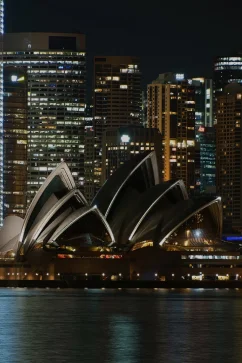Local Festivities in Amsterdam: Celebrating Culture and Community
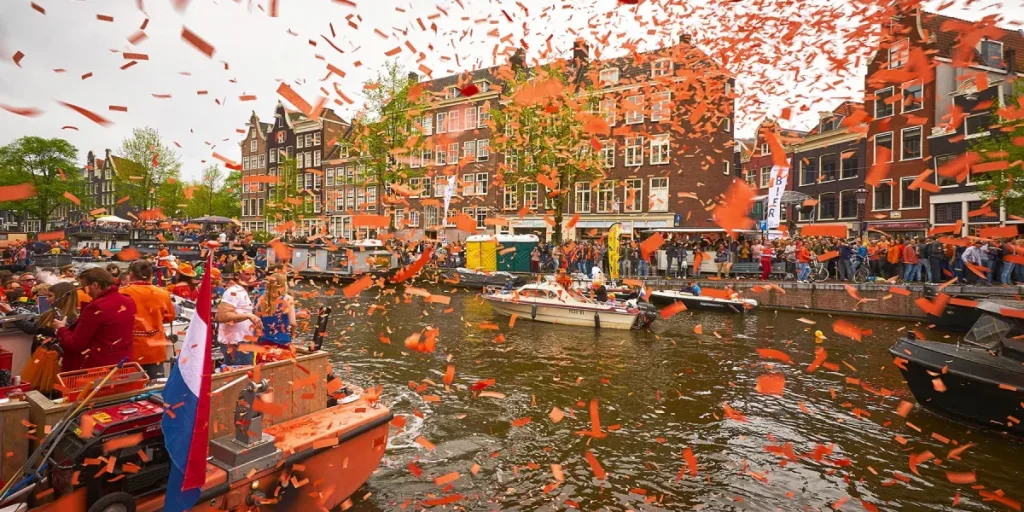
Amsterdam, with its picturesque canals, historic charm, and vibrant culture, is an ideal destination for group travel. From group-friendly activities that cater to all interests to dining experiences that bring people together, the city offers a wealth of options for travelers journeying in company. In this report, we’ll explore the group-friendly side of Amsterdam, including activities, dining, lodging, and conclude with the allure of experiencing this Dutch gem with friends and fellow adventurers.
King’s Day (Koningsdag)
King’s Day, or “Koningsdag” in Dutch, is one of the most celebrated and cherished national holidays in the Netherlands. It’s a day of exuberance, unity, and vibrant orange-hued festivities, and it holds a special place in the hearts of the Dutch people. In this article, we explore the history, traditions, and the lively spirit of King’s Day in the Netherlands.
History and Significance
King’s Day has its roots in the Dutch royal family’s history. It was originally known as Queen’s Day and was celebrated on August 31st, the birthday of Queen Wilhelmina, who reigned from 1890 to 1948. The tradition was continued by her daughter, Queen Juliana, whose birthday was on April 30th. In 2013, King’s Day was established to honor the birthday of King Willem-Alexander, who ascended to the throne on April 30, 2013. King’s Day is a national holiday, celebrated throughout the Netherlands with enthusiasm.
The Orange Celebration
One of the most iconic aspects of King’s Day is the color orange. Orange has long been associated with the Dutch royal family, specifically the House of Orange-Nassau, and it symbolizes national pride. On this day, streets, canals, and public squares are awash with orange decorations, clothing, and accessories. You’ll see people donning orange hats, wigs, sunglasses, and even painting their faces in a sea of vibrant orange.
The Festivities
King’s Day is a day of merriment and togetherness. It kicks off with a nationwide free market, known as “vrijmarkt,” where people of all ages set up stalls to sell second-hand goods, crafts, and homemade treats. It’s a great opportunity for children to learn about entrepreneurship and for adults to declutter their homes. Throughout the country, you’ll find live music performances, dance parties, street fairs, and parades. Amsterdam, in particular, is a focal point for celebrations, with its famous Canal Parade being a highlight. Elaborately decorated boats sail through the city’s canals, and people gather along the waterfront to watch the colorful spectacle.
Food and Drink
King’s Day is a day for indulgence. Street vendors and food stalls offer a variety of Dutch treats such as “bitterballen” (deep-fried meatballs), “poffertjes” (mini pancakes), and “haring” (raw herring). Local breweries and bars serve up a range of Dutch and international beers, contributing to the festive ambiance. King’s Day is a national celebration that encapsulates the spirit of the Dutch people. It’s a day of unity, cultural pride, and pure fun. Whether you’re partaking in the free market, dancing in the streets, or admiring the royal family’s presence, King’s Day is a vibrant and joyous expression of Dutch culture that welcomes visitors to join in the festivities. It’s a day when the Netherlands becomes a sea of orange, and the spirit of togetherness fills the air, making it an experience that resonates with locals and visitors alike.
Gay Pride Canal Parade Amsterdam
Amsterdam, a city known for its progressive values and diverse culture, hosts one of the most vibrant and inclusive LGBTQ+ pride celebrations in the world. Gay Pride Amsterdam, often simply referred to as Amsterdam Pride, is an annual event that unites people from all walks of life in a joyous and colorful celebration of love, acceptance, and equality. In this article, we delve into the history, significance, and the exuberant spirit of Amsterdam Pride. The Canal Parade in Amsterdam is one of the most iconic and colorful events of the city’s annual Pride celebrations. Known for its vibrant and exuberant atmosphere, this unique boat parade has become a symbol of LGBTQ+ pride and acceptance. In this article, we explore the history, significance, and the joyful spirit of the Canal Parade in Amsterdam.
History and Significance
Amsterdam Pride has a rich history that dates back to the late 20th century. The first official Pride event took place in 1996 and was organized by a group of activists and advocates for LGBTQ+ rights. Since then, it has grown into a massive and world-renowned celebration. Amsterdam Pride is not just about throwing a party; it carries a significant message of inclusivity, respect, and the ongoing struggle for LGBTQ+ rights. It aims to raise awareness about the challenges faced by the LGBTQ+ community worldwide and promote a society where everyone can be their true selves without fear of discrimination.
The Canal Parade
The centerpiece of Amsterdam Pride is the Canal Parade, an extraordinary flotilla of elaborately decorated boats that sail through the city’s picturesque canals. Each boat represents different organizations, causes, and LGBTQ+ communities. It’s a breathtaking spectacle that draws thousands of spectators who line the canal banks, bridges, and houseboats to show their support and enjoy the colorful procession. The Canal Parade is not just about fun and festivities; it’s a powerful visual statement of unity and pride, and it has been the platform for various social and political messages over the years. The parade participants include LGBTQ+ individuals, allies, and organizations working toward greater equality.
The Street Party
Amsterdam Pride also features a massive street party that takes over parts of the city center. Revelers dance in the streets, enjoy live music, and take part in various activities. The atmosphere is electrifying, and it’s a time for people to be themselves, celebrating love and diversity. Amsterdam Pride is a testament to the city’s commitment to diversity, equality, and human rights. It’s a dazzling celebration of love, a powerful statement of acceptance, and a reminder that the fight for LGBTQ+ rights continues. It’s also a reminder of the beauty of Amsterdam, a city that embraces all and opens its heart and canals to celebrate the wonderful diversity of the world. Whether you identify as LGBTQ+ or not, attending Amsterdam Pride is a unique and heartwarming experience that fosters a sense of unity, inclusivity, and the understanding that love knows no boundaries.
The Flotilla of Diversity
The heart of the Canal Parade is the spectacular flotilla of decorated boats that traverse the city’s picturesque canals. Each boat is a vibrant representation of various LGBTQ+ organizations, allies, and corporate supporters. These boats are transformed into colorful and extravagant displays of creativity, often with lively music and enthusiastic participants. One of the distinctive aspects of the Canal Parade is the use of water as the stage. The boats travel along the canals, offering an up-close and personal experience for the thousands of spectators who gather along the waterfront, on bridges, and even on houseboats. This unique setup creates an intimate and inclusive atmosphere that allows for interactions between participants and onlookers.
A Celebration of Love
Amsterdam’s Canal Parade is a celebration of love in all its forms. It’s a day for people to come together, be themselves, and support the LGBTQ+ community. The atmosphere is one of joy, unity, and a collective belief in a world where love knows no boundaries. The Canal Parade in Amsterdam is more than just a colorful spectacle; it’s a powerful symbol of LGBTQ+ pride and a demonstration of acceptance. It’s a reminder that the fight for LGBTQ+ rights continues, and it’s a call for a world where everyone can love and be loved without fear or discrimination. Attending the Canal Parade is not only a celebration but also a declaration of support for equality and diversity, making it an experience that touches the heart and inspires change.
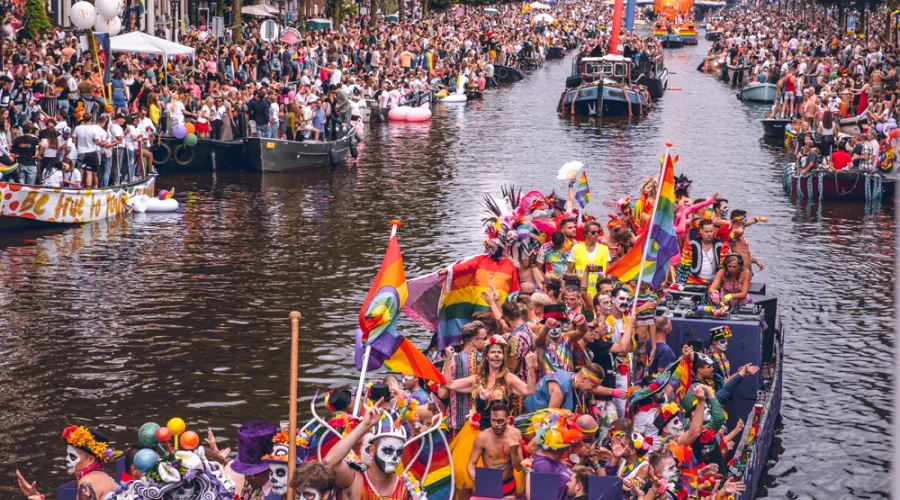
Amsterdam Light Festival
The Amsterdam Light Festival is an annual spectacle that transforms the Dutch capital into a luminous wonderland during the winter months. This enchanting event combines art, technology, and the city’s picturesque canals to create a mesmerizing outdoor gallery of light installations. In this article, we explore the history, significance, and the magical ambiance of the Amsterdam Light Festival.
History and Significance
The Amsterdam Light Festival made its debut in 2012, and since then, it has become a highly anticipated event on the city’s cultural calendar. The festival was conceived as a way to brighten up the darker winter months in Amsterdam, bring art to the streets, and attract both locals and tourists to experience the city in a new and captivating light.
Art Meets Illumination
The heart of the festival is its dazzling light installations. International and local artists are invited to create temporary works of art that incorporate light in inventive and innovative ways. These artworks are then scattered throughout the city, mainly along its famous canal belt. The installations vary in style, size, and concept, making each year’s festival a unique experience. The themes of the light festival often touch upon contemporary issues, social topics, and the city’s history. The combination of art, light, and the iconic Amsterdam canals adds a layer of meaning and beauty to the city’s cultural heritage.
The Canal Route
The heart of the festival is the Water Colors boat route, which takes visitors on a journey along the Amsterdam canals to admire the illuminated artworks. Many of the installations are placed strategically along the water’s edge, creating stunning reflections and playing with the city’s distinctive architecture. The boat route allows for a leisurely and enchanting exploration of the festival, offering a different perspective of the artworks from the water.
A Winter Highlight
The Amsterdam Light Festival brightens up the city during the darker winter months, offering a sense of warmth and wonder amid the cold. The combination of creativity and illumination provides a welcome respite from the long nights and a unique way to experience Amsterdam’s historic canals and landmarks. The Amsterdam Light Festival is a testament to the city’s commitment to art, culture, and innovation. It brings together artists from around the world to create a magical and meaningful experience that resonates with both residents and visitors. The festival is a celebration of creativity, light, and the city’s unique architectural and natural landscape, making it an event that captures the imagination and leaves a lasting impression on all who witness its brilliance.

National Liberation Day (Bevrijdingsdag)
National Liberation Day, known as “Bevrijdingsdag” in Dutch, is a significant annual celebration in the Netherlands that marks the end of the German occupation during World War II. Amsterdam, as the country’s capital, plays a central role in these commemorations. In this article, we delve into the history, traditions, and the significance of National Liberation Day in Amsterdam.
History and Significance
National Liberation Day is celebrated on May 5th each year, signifying the surrender of German forces in the Netherlands in 1945. It brought an end to five years of occupation during World War II, a period of immense hardship and suffering for the Dutch people. The occasion is a reminder of the importance of freedom, democracy, and the resilience of the nation.
Traditions and Observance
- The Remembrance of the Dead (Dodenherdenking): National Liberation Day follows the solemn observance of “The Remembrance of the Dead” on May 4th. At 8:00 PM, a nationwide two-minute silence is observed to honor and remember those who lost their lives during the war, including soldiers, civilians, and members of the resistance. In Amsterdam, the main ceremony takes place at the National Monument on Dam Square, attended by the royal family, government officials, and the public.
- Freedom Festivals: After the solemnity of May 4th, National Liberation Day on May 5th is a day of joy and celebration. Throughout Amsterdam and the Netherlands, “Freedom Festivals” (Vrijheidsfestivals) are organized to celebrate the nation’s liberation and to promote freedom, democracy, and human rights. These festivals feature live music, food stalls, discussions, and cultural performances, creating a vibrant and inclusive atmosphere.
- Veterans’ Parade: A key part of the celebrations is the veterans’ parade in Amsterdam. Dutch veterans who served in various conflicts, including World War II and subsequent peacekeeping missions, participate in a parade. This event recognizes and pays tribute to the service and sacrifices of these individuals.
- Flag Flying: On National Liberation Day, the Dutch national flag is displayed on public buildings, homes, and other locations across Amsterdam. The red, white, and blue tricolor serves as a symbol of freedom and remembrance.
Reflecting on Freedom
National Liberation Day serves as an occasion for reflection and gratitude. It reminds the Dutch people of the sacrifices made to secure their freedom and the importance of cherishing and defending the values of democracy and human rights. The events of World War II are remembered not only as a dark period but as a source of inspiration for building a better and more inclusive society.
The Amsterdam Experience
In Amsterdam, National Liberation Day provides a unique opportunity to engage with the city’s history and its connection to the broader Dutch experience of liberation. The ceremonies and festivals create a sense of unity and appreciation for the peace and freedom enjoyed today. National Liberation Day in Amsterdam is a day of remembrance, gratitude, and celebration. It’s a reminder of the enduring importance of freedom, democracy, and human rights, and it underscores the resilience and spirit of the Dutch people. Whether participating in the solemn ceremonies or enjoying the lively festivals, National Liberation Day is a time to honor the past, celebrate the present, and aspire to a future marked by peace and freedom.
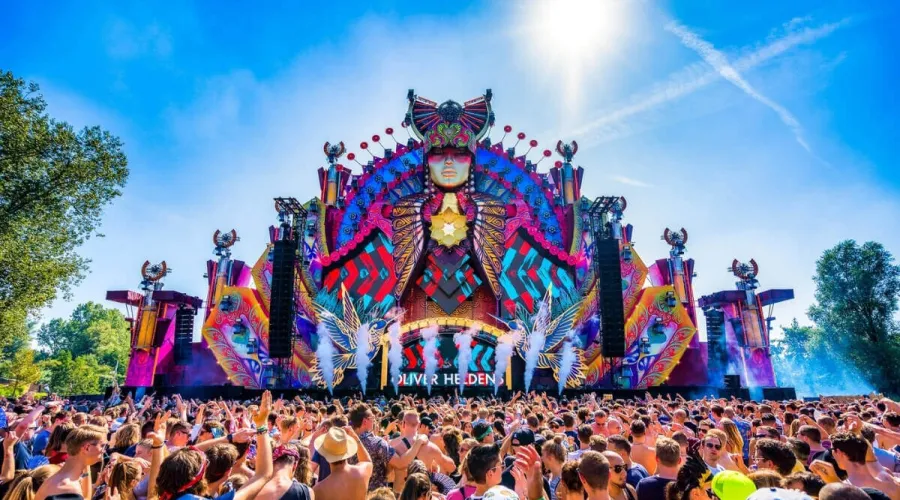
Sinterklaas
Sinterklaas, the Dutch version of Saint Nicholas, is a beloved and centuries-old tradition celebrated in the Netherlands, including Amsterdam. This holiday, which falls on December 5th, is a festive and family-oriented occasion that captures the hearts of young and old alike. In this article, we explore the history, traditions, and the charming spirit of Sinterklaas in Amsterdam.
History and Significance
Sinterklaas has its origins in the medieval feast of Saint Nicholas, the patron saint of children and sailors. The holiday celebrates the legendary figure of Sinterklaas, a kindly bishop who arrives in the Netherlands each year to bring gifts and joy to children. Sinterklaas is known for his long white beard, red bishop’s attire, and his trusty companion, Zwarte Piet (Black Pete), who helps distribute gifts.
Arrival of Sinterklaas
One of the most anticipated moments of the Sinterklaas season is the arrival of Sinterklaas in the Netherlands. Typically, in mid-November, Sinterklaas arrives in Amsterdam on a grand steamboat from Spain. The arrival is celebrated with a colorful parade, welcoming the bishop and his Zwarte Pieten to Dutch soil. Thousands of children line the canals and streets, waving at Sinterklaas and his helpers.
Traditional Sweets
Sinterklaas is associated with a variety of delicious sweets, many of which are enjoyed throughout the holiday season. Pepernoten, small spiced cookies, are a favorite, and they are traditionally thrown into the crowd during Sinterklaas parades. Another popular treat is “kruidnoten,” which are similar to pepernoten. Marzipan figures in the shape of Sinterklaas and Zwarte Piet are also a sweet delight. Sinterklaas in Amsterdam is a heartwarming and cherished tradition that brings people together, especially families. The holiday season in the city is marked by the enchantment of Sinterklaas and the delightful treats associated with the festivities. It’s a time of joy, togetherness, and the celebration of a centuries-old Dutch tradition that continues to capture the imagination of generations.
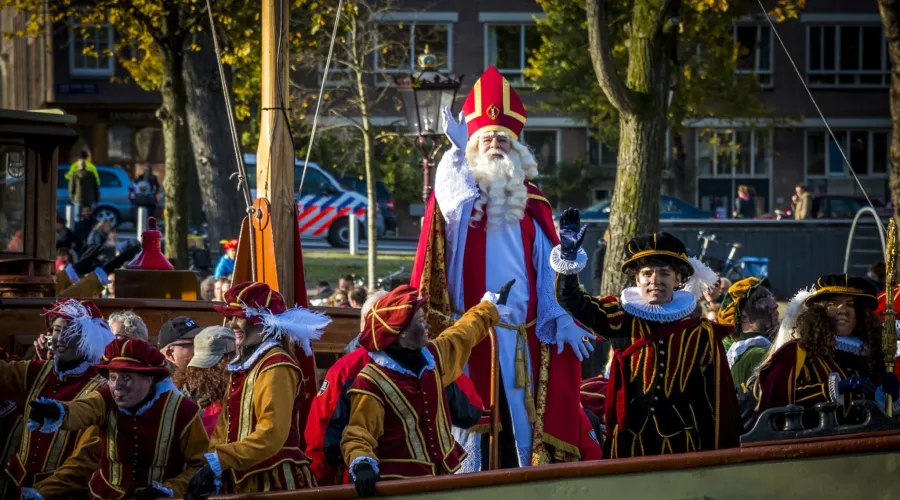
Amsterdam Dance Event (ADE)
Amsterdam Dance Event (ADE) is an annual electronic music conference and festival that transforms the Dutch capital into a vibrant hub for the international dance music industry. With a rich history dating back to 1996, ADE has grown into one of the world’s most significant electronic music gatherings, attracting music professionals, artists, and electronic music enthusiasts from around the globe. In this article, we explore the history, significance, and the electrifying atmosphere of Amsterdam Dance Event.
History and Significance
Amsterdam Dance Event traces its roots to a series of informal industry meetings held in the late 1980s. The official ADE conference and festival were established in 1996, aimed at bringing together professionals and enthusiasts to discuss the latest trends, share knowledge, and showcase electronic music. Since then, ADE has grown exponentially, becoming a pivotal event for the industry and a beloved tradition for music lovers.
The Conference
The ADE conference serves as a global platform for networking, knowledge sharing, and professional development within the electronic music industry. It features an extensive lineup of panel discussions, workshops, keynote speakers, and technology showcases. Topics cover a wide range of industry-related subjects, from music production and DJing to marketing and event management. The conference attracts key players in the electronic music world, including artists, promoters, record labels, and agents.
The Festival
The festival component of ADE is where the party truly begins. Spread across five days, the festival hosts an impressive roster of electronic music events, including club nights, live performances, and special showcases. Amsterdam’s renowned venues and spaces come alive with the sounds of house, techno, trance, and every electronic music genre in between. Some of the world’s most famous and influential DJs and producers perform during ADE, and the city’s clubs and event spaces remain packed with dance music enthusiasts throughout the festival.
Variety of Genres
One of the striking features of ADE is the diversity of electronic music genres it encompasses. While techno and house are staples, the festival embraces all forms of electronic music, providing a platform for niche genres and experimental sounds. Whether you’re a fan of minimal techno, trance anthems, or cutting-edge bass music, ADE has something to offer.
Global Impact
Amsterdam Dance Event is more than a city festival; it is a global phenomenon. It has helped solidify the Netherlands as a key player in the electronic music industry. ADE provides an opportunity for artists to showcase their talents to international audiences, and for music professionals to discuss trends and network on a global scale. Amsterdam Dance Event is not just a festival; it is a meeting of minds, a celebration of electronic music culture, and a platform for emerging talent. Whether you’re a DJ, a producer, a music professional, or simply a fan of electronic music, ADE offers a unique experience that unites people through their shared love for the beats, rhythms, and melodies of the genre. It’s a must-attend event for anyone who wants to immerse themselves in the world of electronic music and experience its pulsating heart in the heart of Amsterdam.
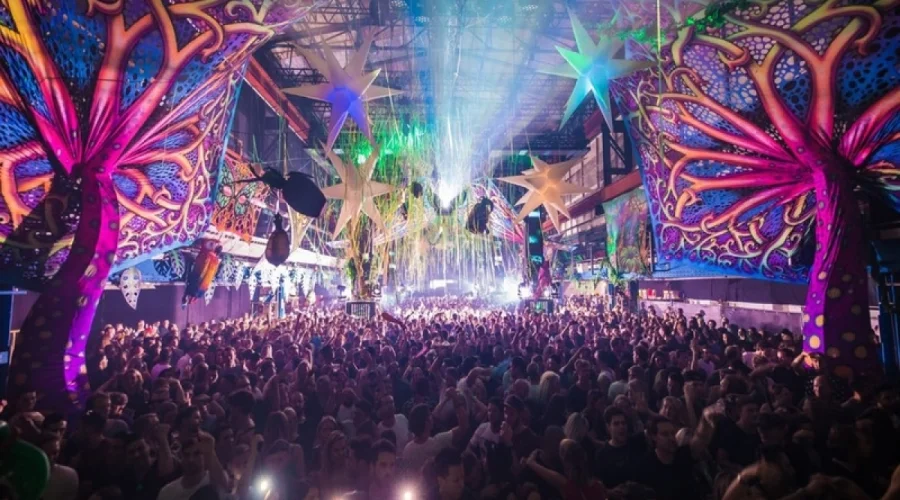
Tulip Festival
The Tulip Festival in Amsterdam is a stunning annual celebration of spring that transforms the city into a kaleidoscope of vibrant colors. With millions of tulips in bloom, this event pays homage to the Netherlands’ iconic flower and its role in Dutch culture and history. In this article, we explore the history, significance, and the captivating beauty of the Tulip Festival in Amsterdam.
History and Significance
Tulips have a deep connection to Dutch history, dating back to the 17th century during the Dutch Golden Age. During this period, the tulip was a status symbol, and the famous “Tulip Mania” saw tulip bulbs sold for exorbitant prices. While the market crashed, the tulip remained a beloved and cherished flower in the Netherlands. Today, the tulip is a symbol of the country and is celebrated each year during the Tulip Festival.
Blooms Across the City
The Tulip Festival typically takes place in April when the tulips are in full bloom. During this time, public spaces across Amsterdam burst into color as tulips adorn gardens, parks, and squares. The festival covers a vast area, allowing both residents and visitors to enjoy the breathtaking sights throughout the city.
Photography and Tourism
The Tulip Festival is not only an enchanting event for visitors but also a dream for photographers. The vivid colors and breathtaking scenery make it a favorite subject for photography. Tourists from around the world flock to Amsterdam to witness the tulip extravaganza and capture the beauty of the blooms. The Tulip Festival in Amsterdam is a testament to the beauty of nature and the power of flowers to bring joy. It’s a celebration of Dutch culture, history, and the enduring love for the tulip. As the city transitions from winter to spring, the Tulip Festival is a breathtaking reminder of the vitality and colors that this iconic flower brings to the world. Whether you’re a horticultural enthusiast, a photographer, or simply someone who appreciates natural beauty, the Tulip Festival in Amsterdam is a must-see event that leaves a lasting impression.
These local festivities provide a window into the cultural tapestry of Amsterdam and an opportunity to connect with the city’s residents. Whether you’re enjoying the exuberance of King’s Day, embracing diversity at the Pride Parade, or marvelling at the illuminated art during the Light Festival, these events offer a sense of belonging and a chance to celebrate Amsterdam’s vibrant community spirit.

Conclusion
Traveling to Amsterdam in a group is a chance to bond, create lasting memories, and explore the city’s rich tapestry of experiences together. With a plethora of group-friendly activities, diverse dining options, and various lodging choices, Amsterdam provides the perfect backdrop for group adventures. Whether you’re enjoying a canal cruise, savoring a Rijsttafel dinner, or simply taking in the city’s vibrant atmosphere, Amsterdam invites you to discover its charms with friends and fellow travelers. It’s a journey that promises both togetherness and the opportunity to explore the heart of this Dutch gem as a united and memorable collective.


